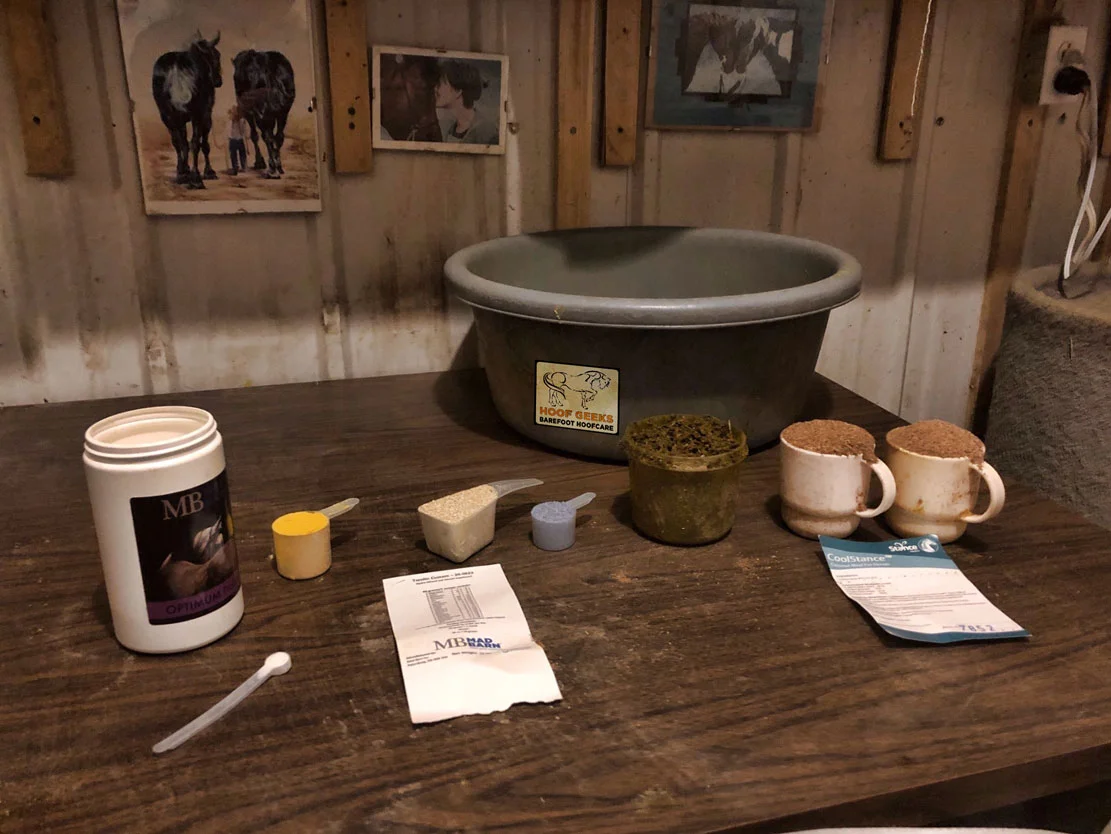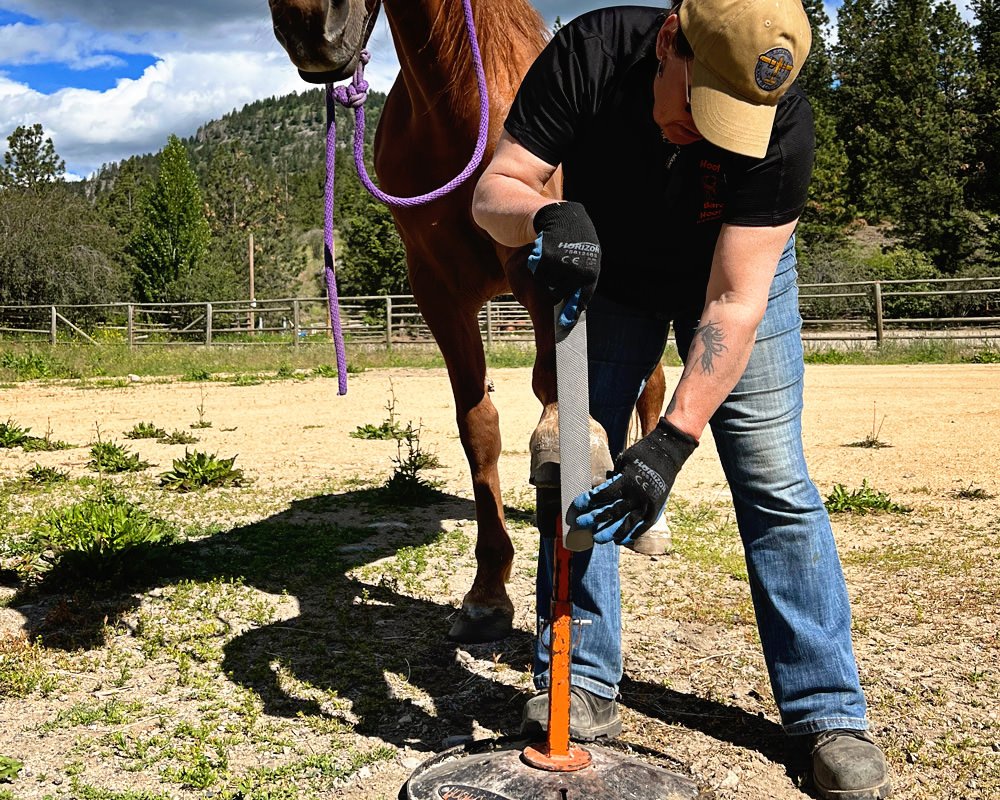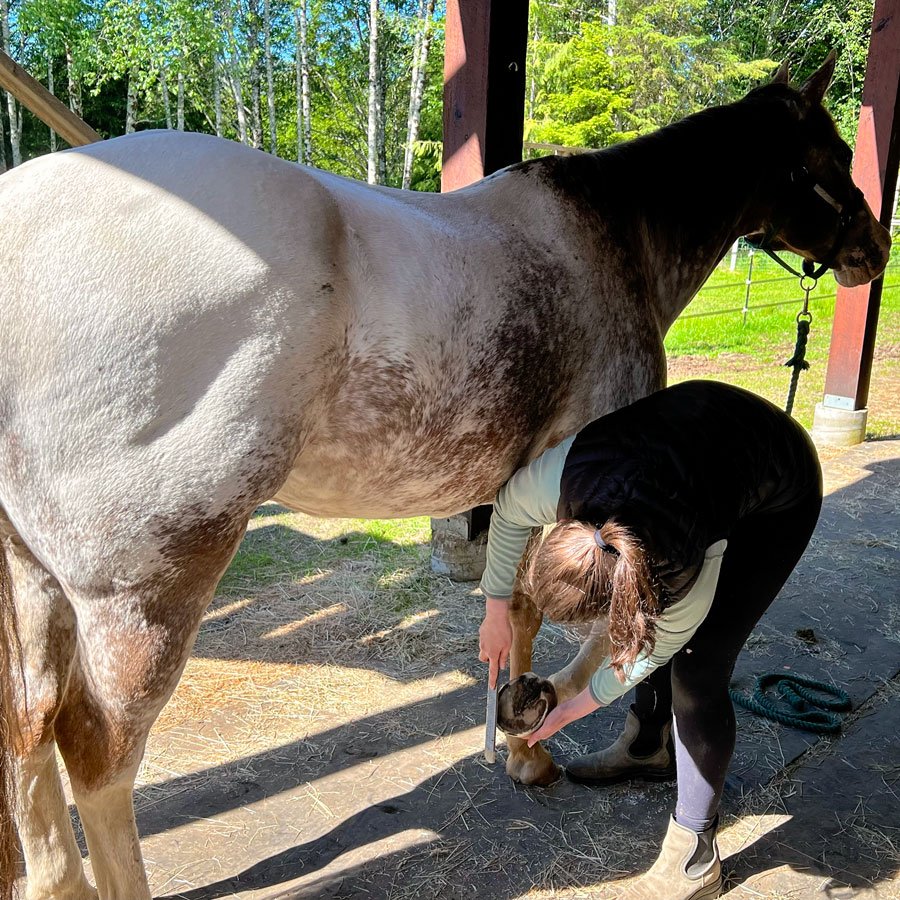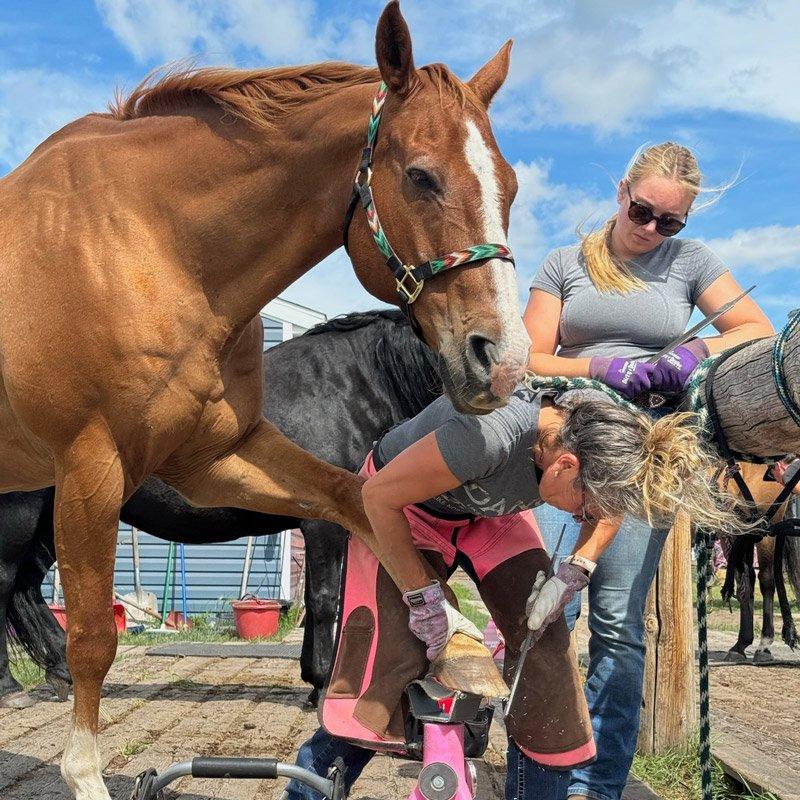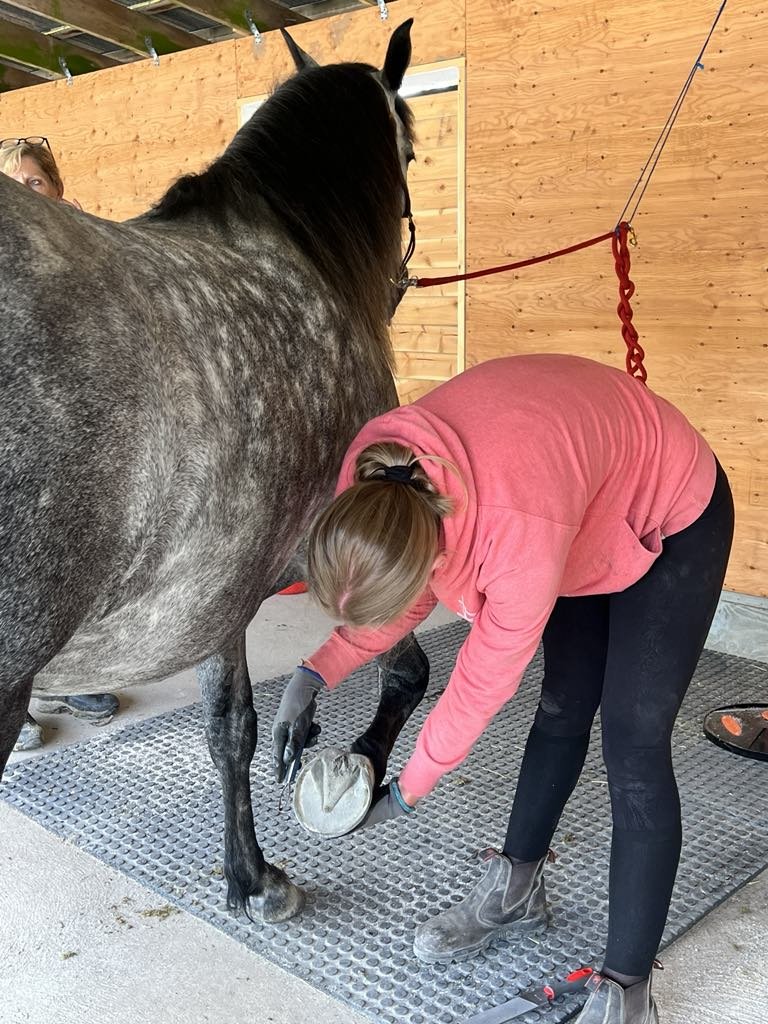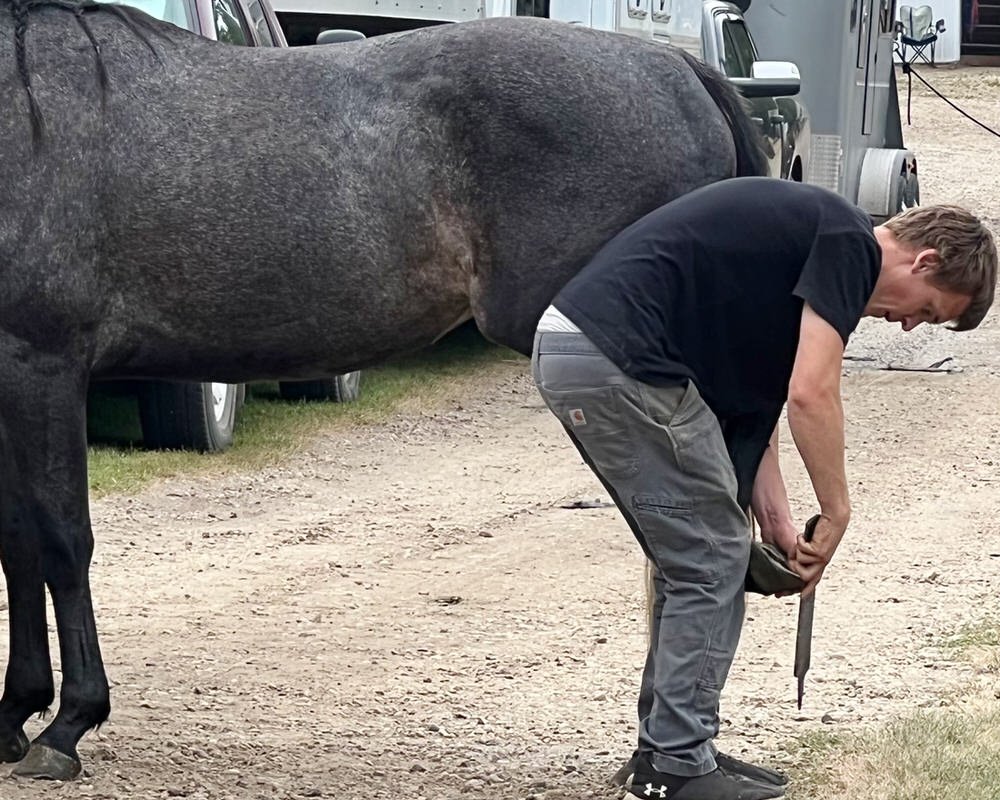Hay testing and our supplement routine
This is Christine going over some of the ins and outs of hay testing and how she's set up her morning mash routine with her horses.
Keep it simple!
Hay testing really does allow you to do this.
How do we balance our hay?
We get our hay in the late summer and sample it, (we provide this service - see links below). This is the only way to determine what is lacking from hay - protein, minerals, omega 3 fatty acids, vitamin E etc. Once your hay has been analyzed, it needs to be sent to an equine nutritionist for mineral balancing. Once completed the list of minerals required will be sent to you and you can then decide to send this list to MadBarn to get a custom mix for your horses. I get a 100lb bag. The shipping is free and you’ll get a chart telling you how much to feed. For us it’s just one scoop (4 tbsp) per horse! Email us if you would like a list of equine nutritionists who provide this service.
To make sure our horses have optimal nutrition I add soaked hay cubes and beet pulp (about 2.5 cups of soaked beet pulp), a scoop of the balanced supplement (4 tbsp), 2tbsp of salt and 2tbsp of Stance Equitec Turmericle. Turmericle is fantastic to keep inflammation down. Now because I harvest my hay in the fall so that it is low in sugar and high in fibre, it also means it will be low in protein (I prefer to have low sugar hay to avoid all kinds of problems) as I can always add protein. I’ve been using Stance Equitec’s Coolstance with fantastic results (check to see if you can buy this locally as it’s too heavy to ship).
I got blue stockman’s salt from Master Feeds this time but normally I get my salt from BUCKEYE because there is added copper and zinc in it (the horses are usually low on these minerals) but it was out of stock this time. If I can find some coarse sea salt I may just start feeding that as it’s only about $35 for a 50lb bag. The purer the better and dyes and anti-caking agents are not natural. We do our best with what we can find sometimes right? Many people aren’t aware that salt is just as important in the winter as it is in the summer. If it makes them a little thirsty they will stay hydrated which is very important in cold weather. Water is how the horse balances their sodium and mineral intake.
“I would just like to clarify the statement made about using turmericle for Cushing’s - Turmericle does not replace the medication - it helps to control the inflammation present in animals with Cushing’s.
Cushing’s is caused by an overabundance of cortisone and cortisol - the corticosteroids that an animal’s body naturally produces to treat inflammation. For example, if an older horse suffers from worn joints accompanied by inflammation, this triggers more corticosteroid production which will in turn compound Cushing’s symptoms. The key is to treat inflammation in the animal to reduce the demand to produce these steroids.”
Percy (mentioned in the video) has been an interesting rehab case but I’m so happy with the progress I’ve made with a frequent barefoot trim and this balanced hay mineral and supplement blend. It’s so rewarding to see your efforts paying off and I promise you once you can get your hay tested and get set up this way…. your horses’ health will tell the tale! Just like with us humans, when it comes to our health prevention is key.
Nutrition is definitely a topic of interest at our hoof trimming clinics. We talk a lot about whole horse health on
Day 1 (theory day) of our clinics.

